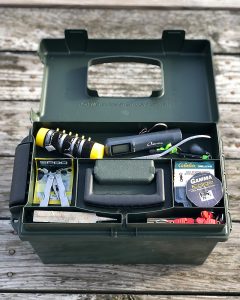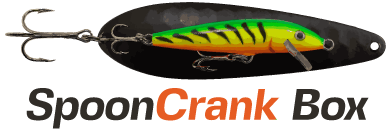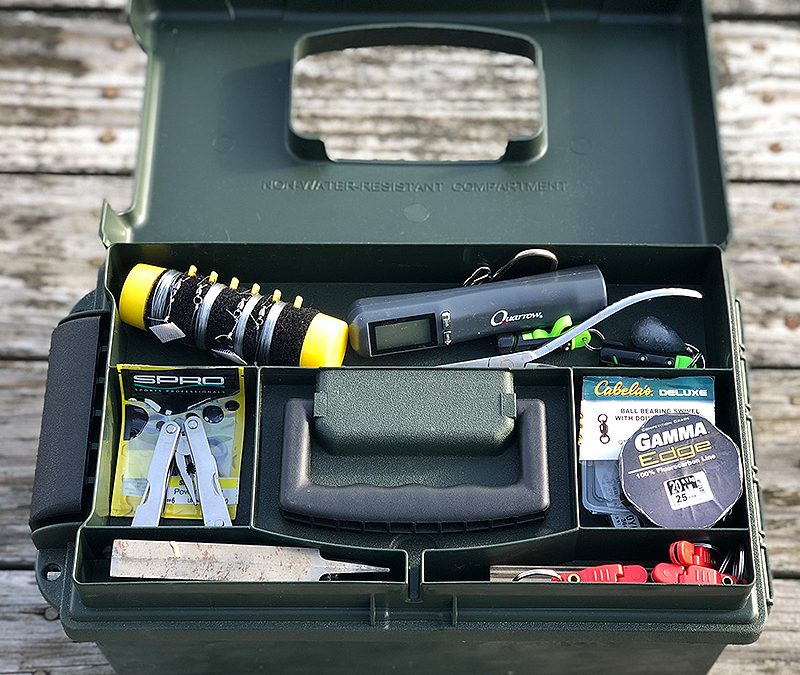5 Awesome Fishing Tackle Storage Ideas and What to Look for When Buying a New One
Fishing is no different from any other hobby, trade, or specialized activity in need of a certain set of tools. Making the most of your time on the water will depend on how well-organized you are as a fisherman. You’ll spend less time searching for lures and more time bringing in fish if you learn how to store fishing gear for quick re-rigging and simple access.
Apply these 5 simple strategies for your fishing tackle storage to keep your tools organized and accessible.
#1-Keep Plastic Utility Boxes on Hand
When storing your hard baits, use plastic utility boxes with O-ring sealing to ensure waterproof storage. Crankbaits, topwater walk-the-dog lures, and jerkbaits with hard bodies are examples of hard baits. Utility boxes are affordable, available in a range of sizes, and simple to stow away in your boat’s storage spaces. In reality, many of today’s boat models come with tackle storage systems and tackle box drawer units, as you can see if you search online for “fishing tackle storage ideas for boat.”
#2-Heavy Duty Freezer Bags for Soft Baits
Gallon-sized freezer bags are perfect for keeping your soft plastic baits organized, whether you’re arranging your fishing gear in the garage or on your boat. Anyone who utilizes creature baits or soft plastic worms has probably witnessed the “great meltdown” that happens when they are unintentionally put next to each other in a plastic utility box.
Soft baits should be stored in their original packaging, as opposed to hard baits, and then sorted according to color and kind (e.g., ribbontail worms, speed worms, lizards, crawfish, etc.). The baits should be placed into gallon-sized freezer bags while they are still in their original packaging after being grouped together.
#3-Dont Forget to Use Labels for Fishing Tackle Storage
For simple identification, use labels on plastic tackle boxes and bags. To immediately identify what’s inside them, get a peel-and-stick label kit or a domestic label maker. Since you can see through the plastic cases and bags, this may seem redundant, but these are the little things that matter when you need to quickly grab the proper lures or baits.
#4-Always Clean the Lures Before Storing
If you want your hard baits to last long, learning how to clean fishing lures is an essential element of fishing tackle storage. To clean your lures, use warm water, mild dish soap, and a soft-bristled toothbrush. Cleaning and avoiding rusted hooks should be a priority when it comes to understanding how to store fishing gear throughout the winter.
#5-DIY Fishing Tackle Storage Box for Swivels, Beads
One of the best tackle storage solutions is to utilize empty film canisters or small, lidded plastic storage containers, which are typically available at hobby stores, for small terminal gear items like swivels and beads. These containers’ small size will make it simple for them to fit into the compartments of most utility cases. Make sure to mark the tops to enable easy identification,
In addition to learning how to fish, you should also learn how to plan your fishing adventures..
Top 3 Things to Look for When Buying a Fishing Tackle Box
It is essential to have an organized compartment big enough to hold everything you need for a stress-free and productive day on the water, including rods, reels, lures, bobbers, flies, sinkers, leads, hooks, and so much more. You may get the space you want in a fishing tackle box, which is handy and portable, but you shouldn’t settle for any old box. Make certain that the choice you select will meet your needs both today and in the future.
1. The Box Shell or Material
The interested fisherman has a wide range of options, although most box selections are based on the material or shell of the case. You can select a soft, fabric bag or a rigid, more conventional outer, often made of plastic. Both options are great for fishing, but each has advantages and disadvantages.
For instance, fixed trays on a display mechanism that open when the container is open are often provided in hard shell fishing tackle boxes. Under the trays of these boxes are additional storage spaces for other essentials like line and reel alternatives. Unfortunately, even though they are strong, hardshell boxes are big and difficult to handle, making them a hassle for fishermen who prefer to switch out their equipment regularly.
Compared to their hard shell counterparts, softshell options, sometimes known as tackle bags, are a little more adaptable. The majority of bags include plastic cases inside for storing your materials. Since additional cases can be purchased separately, switching out fishing gear is as simple as pulling out one tray and replacing it with another.
Additionally, fishing tackle storage bags weigh less than regular fishing tackle boxes. Unfortunately, tackle bags are not as protective of your fishing gear even if they are helpful and adaptable. When dropped, the softshell doesn’t do anything to protect the items.

2. The Organization
You should look for a fishing tackle box with several sections or organizing possibilities. Every fisherman is aware that tangled hooks, lures, lines, and a variety of other objects can result in hurting fingers and other injuries. A good box should include plenty of compartments and slots or trays of various sizes to hold various tools.
You should take customizable trays into consideration in addition to set storage options. These resizing-capable compartment solutions feature detachable walls and slots, so you can locate a spot for that elusive bobber or bait. Most fishermen are aware that cramming a big hook into a spot that is too tiny can result in breakage. Make sure there is space and a variety of alternatives for all of your tools before purchasing any tackle storage box.
3. Storage and Size
Some individuals, especially beginners, sometimes believe a tackle box simply contains tackle, yet fishing necessitates a variety of gear, including additional rod and reel combinations. Make sure the box you choose has storage space in addition to the space required for the tackle. Before shopping for a fishing tackle box and figuring out what size you might need, it is important to assemble all of your fishing equipment in one place.
To determine how many trays or compartments you need, count the hooks, bobbers, lures, etc., but also take a close look at the reels, lines, and other gear you frequently carry out with you. You may be a little selective when selecting boxes and bags because they come in a variety of sizes.
You shouldn’t make a hasty decision while buying a fishing tackle box. Think about all you have and what you’ll require for just one trip. Once you have that figured out, you can decide on the size and kind of box you require.
Buy fishing tackle storage box

